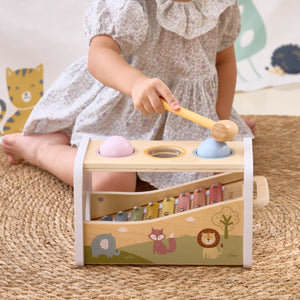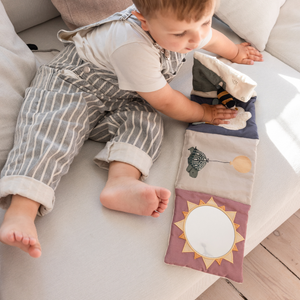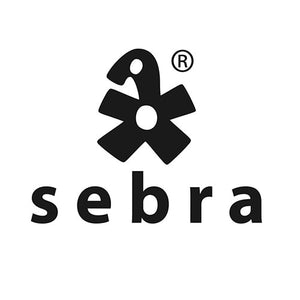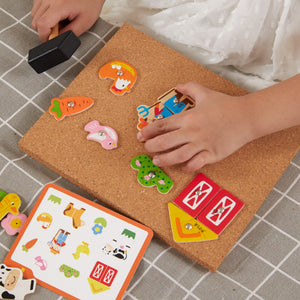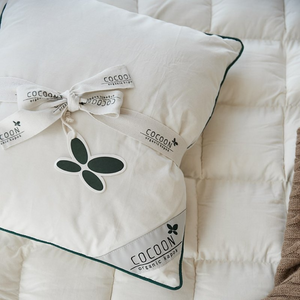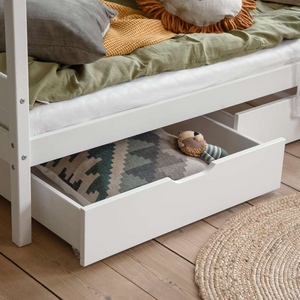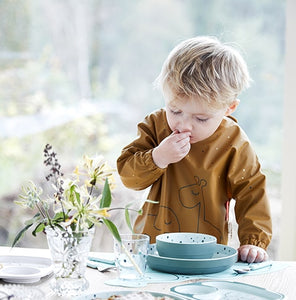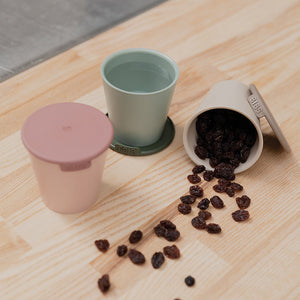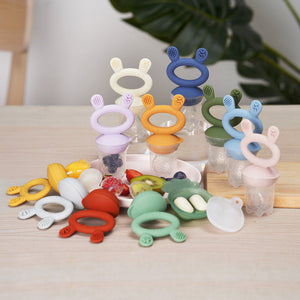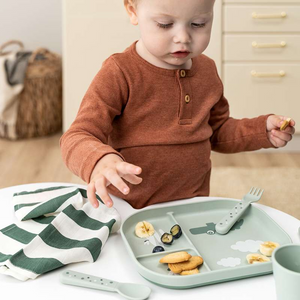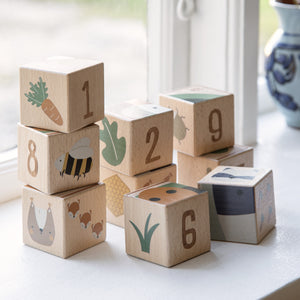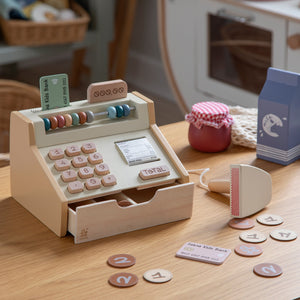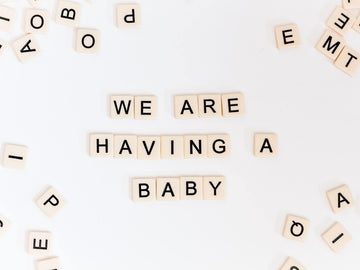Your little golden nugget is suddenly not so little anymore. Time flies by, and now you have already reached the time when it requires more than just your milk to satisfy the little one.
Perhaps your child has also begun to show interest in your food at the dinner table, which is a typical sign that he/she is ready to take the next step. Ready to let go of the breast or bottle and experiment with a more varied diet. But one thing is for the little one to be ready for the change; another thing is whether you are?
It is quite natural, especially for first-time mothers, to fear the transition from liquid to a bit more solid food. Because what if something goes wrong? Is the baby even ready for the first porridge or mash? And what is good baby food, really?
The questions are many, and we have therefore set out to create a little guide on when and what you can put in your baby's mouth.
4-6 months
You can gradually start introducing your child to thin mash and porridge without lumps after four months – preferably not before. The little one does not really need anything other than milk until he/she is around six months old. But children are different, and some develop faster than others.
If your child still cannot hold his/her own head, you should wait to give anything other than milk – even if they are over four months old. It is important that your child can sit up and hold his/her own head during meals so they can easily cough up anything that may end up in the wrong throat.
Clearly, a baby does not go from milk to mash in a single day. The first couple of weeks, you might just give small tastes so your little one can get used to the texture of the food, but also to the way of being fed – with a spoon. After that, you can start to increase the amount of porridge.
When the first meal with the project spoon food is to take place, it would be a good idea for the whole family to gather for dinner, as this will create a more cozy and relaxed atmosphere. At the same time, not all focus will be on whether and how much the little one eats.
Also, feel free to talk about the food you put in the baby's mouth, and try out the sound we all know: “mmmhhhh”. Even if it might sound silly, it actually rubs off on your child, who will want to taste it. So go ahead and make lots of sounds.
Porridge and vegetables
Corn, millet, and buckwheat flour or flakes are really good types to make porridge for the first couple of spoon-feeding meals. They provide a mild flavor and are also gluten-free, which your child should not have too much of. You can also choose to add a bit of fruit puree to sweeten the porridge and vary the flavor. It is recommended to use ripe apples, bananas, pears, or peaches.
If your child just needs to get used to the spoon, you can also start by serving a liquid and creamy potato soup. Yum! Your child can actually eat most vegetables such as carrots, cauliflower, broccoli, peas, zucchini, etc. However, remember to clean them well and cook them thoroughly so they can be easily mashed. Nitrate-rich vegetables (spinach, fennel, beets, celery) should only be given in limited amounts when the child has passed six months.

As an alternative to spoon food, there is a super smart type of “food sucker” from Kidsme , which is perfect for introducing solid food. The clever thing about this product is that you simply put a piece of fruit or vegetable into the pacifier, which the little one can then explore by pushing it out through the holes.
Watch this video, where you can see exactly how it works. Watch it here:
Still remember the milk!
Although your little treasure has now grown so big and skilled at solid food, it doesn't mean you should stop breastfeeding or using formula. It's actually quite important that you still supplement with breast milk or formula after each meal, so the baby stays full. It is also recommended to partially breastfeed until the age of 12 months.
6-9 months
After your child turns six months, he/she should start learning to chew. Therefore, the food should not be as thin as it was at the beginning. It would be a good idea to start adding some fish, poultry, and meat to the meals, as these contain iron, which is good for your child.
Feel free to vary between different types of meat such as pork, chicken, and veal. Your child will also benefit from consuming various types of fish – both fatty (mackerel and salmon) and lean (sole and cod). However, tuna is not good for your child – not even canned tuna! Your child's brain is still developing and is therefore very sensitive, and tuna can lead to excessive mercury intake compared to their low body weight. So be mindful of that.
When your child reaches eight months, a few changes occur. He/she can start moving the tongue from side to side and mixing food with saliva. Therefore, they can begin to eat real chewable food. Wuhu!
Chewable food primarily consists of pieces of fresh fruit or bread bites with spreads, such as liver pâté, avocado, or mashed egg. You can actually feed with all types of bread – including whole grain bread. But a high content of seeds should be waited on until your child is around one year old.
9-12 months
Now the little one can finally start eating your food, where flavor and texture are, of course, adjusted to your child. However, you no longer need to mash the food very fine, as the little one needs to practice chewing and swallowing coarser food than they are used to. It is probably enough to mash the food with a fork or cut it into small bite-sized pieces that your child can eat with their fingers. This could be fruit, pasta spirals, and vegetables.
During this period, the little one should also be familiarized with a wide variety of good and healthy foods. Therefore, it would be a good idea to put sweet foods on the shelf and establish healthy eating habits to ensure good nutrition that will follow the child in their development going forward.
Easy everyday meals in under 30 minutes
If you need inspiration for making super easy, yet still delicious, everyday meals, you can take a look at Gastrofun.dk, where you will find tasty recipes for easy dishes that can be prepared in under 30 minutes.
If you prefer not to cook yourself, you might consider taking a look at the options for getting a meal kit delivered to your door.









